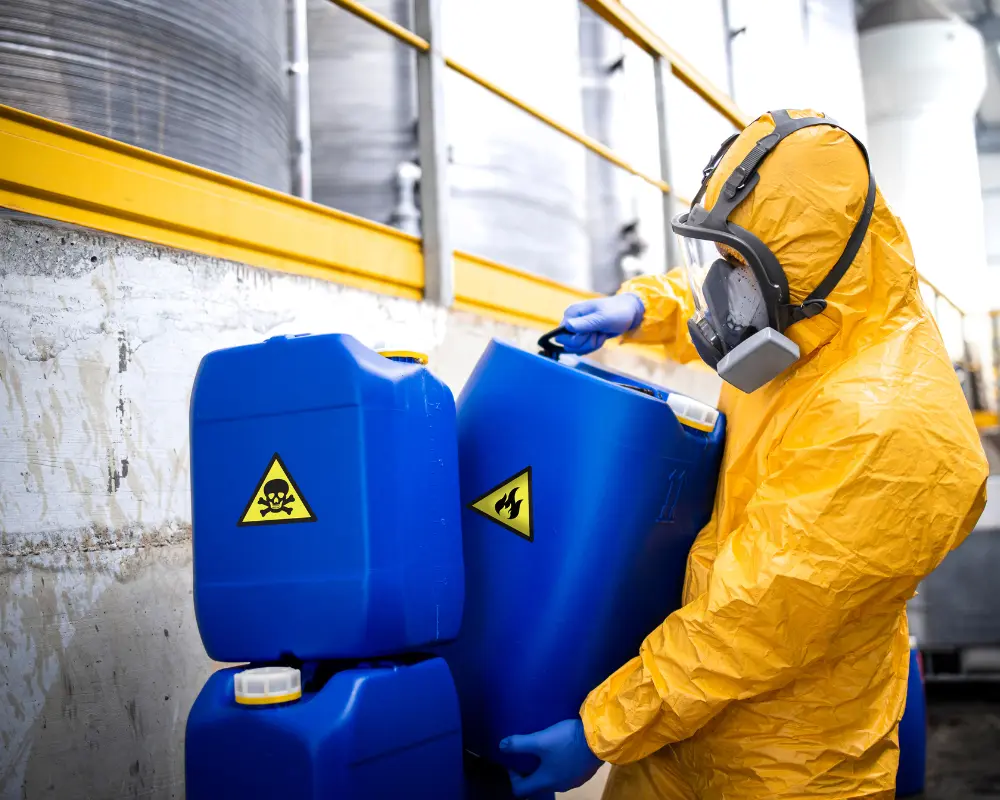If you’re responsible for overseeing operations in high-risk industries like oil and gas, mining, or chemical manufacturing, you know the threat of accidents in explosive atmospheres is ever-present. Consequently, intrinsically safe technology becomes a lifesaver, providing another defense against catastrophic incidents. In this article, we’ll delve into intrinsically safe technology and how innovative solutions can work hand in hand with your existing safety measures to ensure your workplace remains safe and secure.
What is Intrinsically Safe Technology?
In high-risk sectors like oil and gas, mining, and chemical manufacturing, the consequences of even a minor oversight can be catastrophic. Moreover, in these industries, the environment itself is a latent hazard, filled with combustible materials or explosive gases. Here, a tiny spark, a surge of electrical energy, or excessive heat is not just a technical failure; it’s a potential trigger for a disaster.
Consider the diverse range of devices essential for operating safely and effectively in environments where the atmosphere could be dangerous. Sensors, for instance, are indispensable in constantly monitoring gas levels, providing vital real-time data that inform critical safety decisions. Furthermore, in many cases, hand-held radios are the only means of communication in these remote or isolated areas. Without incorporating intrinsically safe design principles, these devices could pose a significant risk of igniting these hazardous environments.
Thus, the brilliance of intrinsically safe technology comes into play. It’s engineered to avert the ignition of flammable gases, vapors, or dust in these challenging settings. Central to this technology is the principle of energy limitation. This pivotal aspect ensures that the electrical and thermal energy of these devices is rigorously controlled and kept at levels so low that they cannot trigger an ignition in a potentially explosive atmosphere. Now, let’s explore some fundamental principles that make it work, ensuring safety in the most challenging environments.

Key Principles and Processes Behind Intrinsically Safe Design
Intrinsically safe technology is underpinned by a rigorous framework of regulations and standards, ensuring that every device meets the highest safety criteria. These principles are more than just guidelines; they are the cornerstone of safety in environments where the risk of explosion is ever-present.
Each design aspect, from circuit layouts to material selection, is scrutinized and tested to ensure compliance with international safety standards such as ATEX in Europe and NEC 500 in the United States. This meticulous adherence to standards guarantees that devices are reliable and inherently safe, capable of operating in explosive atmospheres without posing a risk of ignition.
Intrinsically safe is a field where precision engineering meets stringent safety standards. Here are some of the principles and processes it relies on:
Energy Limitation at the Source
The core of intrinsically safe design is to ensure that the energy produced by any device is insufficient to cause ignition. This is done by designing electrical circuits that can only generate or store very low energy levels, levels lower than needed to ignite a hazardous atmospheric mixture of gases, vapors, or dust.
Use of Barriers and Isolators
Intrinsically safe devices often incorporate barriers and isolators to achieve this energy limitation. These specialized components restrict the amount of electrical energy entering a hazardous area. For example, zener barriers limit the voltage and current that can pass through them. If an electrical fault occurs, the barrier ensures that only a safe, low level of energy can reach the hazardous area.
Temperature Control
Alongside controlling electrical energy, intrinsically safe design also focuses on managing thermal energy. This involves ensuring that the device does not reach a temperature that could ignite gases or dust in the environment. Materials and components are selected and designed to dissipate heat effectively and prevent hotspots.
Fail-Safe Engineering
Another crucial aspect is designing devices to be fail-safe. This means that even in the event of a component failure, the device will either cease to function or continue to operate in a safe mode. This design philosophy ensures that safety is maintained under normal operating conditions and in the event of a malfunction.
Comprehensive Testing and Certification
To verify that devices meet these stringent criteria, intrinsically safe equipment undergoes rigorous testing and certification processes. This includes testing under extreme conditions and ensuring compliance with international safety standards. Only after passing these tests can a device be certified as intrinsically safe.
Component Level Safety
The safety measures extend down to the smallest components. Capacitors, resistors, and other elements are chosen based on their ability to operate within the safe energy limits. The design ensures that even in the aggregate, the components do not produce enough energy to cause ignition.
Redundancy and Robustness
Often, intrinsically safe designs incorporate redundancy and robustness in their circuits. This might mean having multiple barriers or backup systems to ensure others can maintain intrinsic safety even if one safety mechanism fails.
Intrinsically Safe Tech and Advanced Monitoring
Intrinsically safe technology is critical to preventing ignition in hazardous environments, acting as a proactive shield against potential disasters. Additionally, to elevate safety measures to the next level, one must consider advanced monitoring technologies like those offered by SlateSafety. The intrinsically safe BAND V2 physiological monitor is coming soon. These technologies focus on proactive health and environmental monitoring, providing real-time insights into workers’ health and the surrounding conditions, enabling swift action to mitigate risks such as heat stress.
The synergy of intrinsically safe devices and advanced monitoring systems forms a comprehensive safety strategy. While intrinsically safe tech prevents ignition risks from equipment, advanced monitoring continuously oversees worker well-being and environmental factors, combining accident prevention with proactive health surveillance.
SlateSafety innovates in this space with technologies that extend beyond traditional safety measures. Their wearables and sensors offer real-time data on crucial health metrics, facilitating prompt decision-making and interventions. This approach is particularly vital in industries where heat stress and physical exertion pose significant risks, ensuring workers are safeguarded from equipment hazards and occupational health threats.
In conclusion, while intrinsically safe technology is fundamental in hazardous environments, integrating advanced monitoring solutions like SlateSafety’s represents a significant leap in safety strategy. It’s about moving from solely preventing ignition to actively protecting all facets of worker health and safety. Adopting this holistic safety approach, combining proven intrinsically safe technology with innovative monitoring systems, paves the way for creating safer, healthier workplaces.

